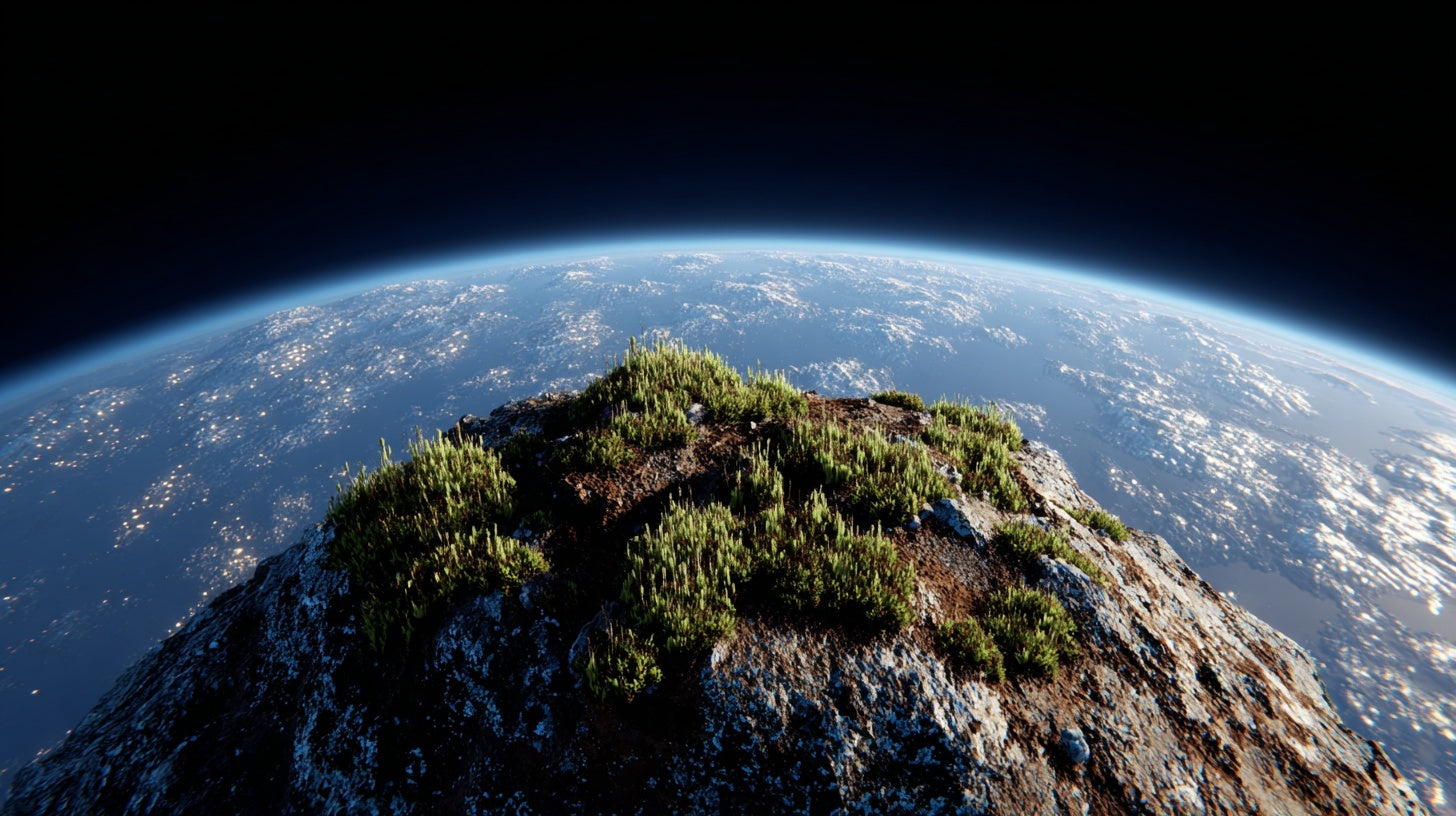Moss in Space: Yes, Really
We knew moss was tough, but we did not know it was space tough.
Every now and then we stumble across something that makes us stop whatever we are doing, blink twice and go, “Sorry, what?” This was one of those moments.
A research team recently tested the survivability of moss by sending live samples into the upper atmosphere using a high altitude balloon. The idea was simple but brilliant. If moss can tolerate some of the harshest conditions on Earth, what happens when you expose it to conditions that sit just below space itself?
What actually happened up there
The moss samples were attached to a platform beneath a stratospheric balloon and lifted to an altitude where the environment closely resembles near space. As the balloon climbed, the moss experienced:
- extreme cold reaching well below freezing
- intense UV and cosmic radiation
- very low atmospheric pressure
- rapid humidity and temperature shifts
The platform held sensors that recorded environmental conditions, while the moss sat in open exposure to the stratosphere. After reaching altitude, the balloon burst as planned, and the moss was recovered once the payload parachuted back to Earth.
The surprising part is what happened next. The moss returned with intact cell structures, visible resilience and signs that it had tolerated the conditions far better than expected. In other words, it did not simply survive the trip. It held itself together in an environment very few terrestrial organisms manage well.
Why moss can handle this kind of punishment
Moss has a few evolutionary tricks that make this possible.
1. It can shut itself down and restart
When conditions become too harsh, moss enters a dormant state known as desiccation tolerance. It pauses biological activity until the environment improves. Near space is an extreme version of this, yet moss endures it with surprising ease.
2. Its cell structures are compact and flexible
Moss cells can handle deformation, cold shocks and rapid pressure changes more effectively than many vascular plants. Being small and efficient is a genuine advantage here.
3. Moss does not rely on soil
It happily grows on bark, stone, rooftops and anything else it can grip. A wild ride to the edge of space is not entirely outside the spirit of what moss does on Earth, just at a much higher altitude.
What this means for us back on Earth
We already know moss is hardy in the forest. That is what makes it so rewarding to work with. But seeing it tolerate near space conditions is a whole new level of impressive.
If moss can stay intact through freezing temperatures, radiation spikes and the thin air of the stratosphere, it makes sense that it thrives in:
- sealed terrariums
- unpredictable Melbourne humidity
- low light corners of a home
- bathrooms, desks and forgotten shelves
Moss is designed to adapt. Designed to persist. Designed to surprise us.
It is one of the many reasons we love working with it. Moss is soft and quiet, but it is also remarkably strong.
Does this mean moss will grow on Mars one day?
We are not suggesting moss will colonise other planets, but experiments like this do make you wonder where the limits truly are. If it can tolerate the edge of space, what else is possible?
Maybe one day someone will create the first tiny terrarium beyond Earth. And maybe moss will be the one plant humble enough, simple enough and resilient enough to try.
We would not be surprised.
Closing thoughts
If you ever needed a reminder that nature is full of quiet brilliance, moss is a perfect example. The more we learn about it, the more it surprises us.
We will keep sharing stories like this as we find them. The natural world is packed with wonders, and moss will always have a place at the front of the queue for us.
Stay curious.
💚


0 comments